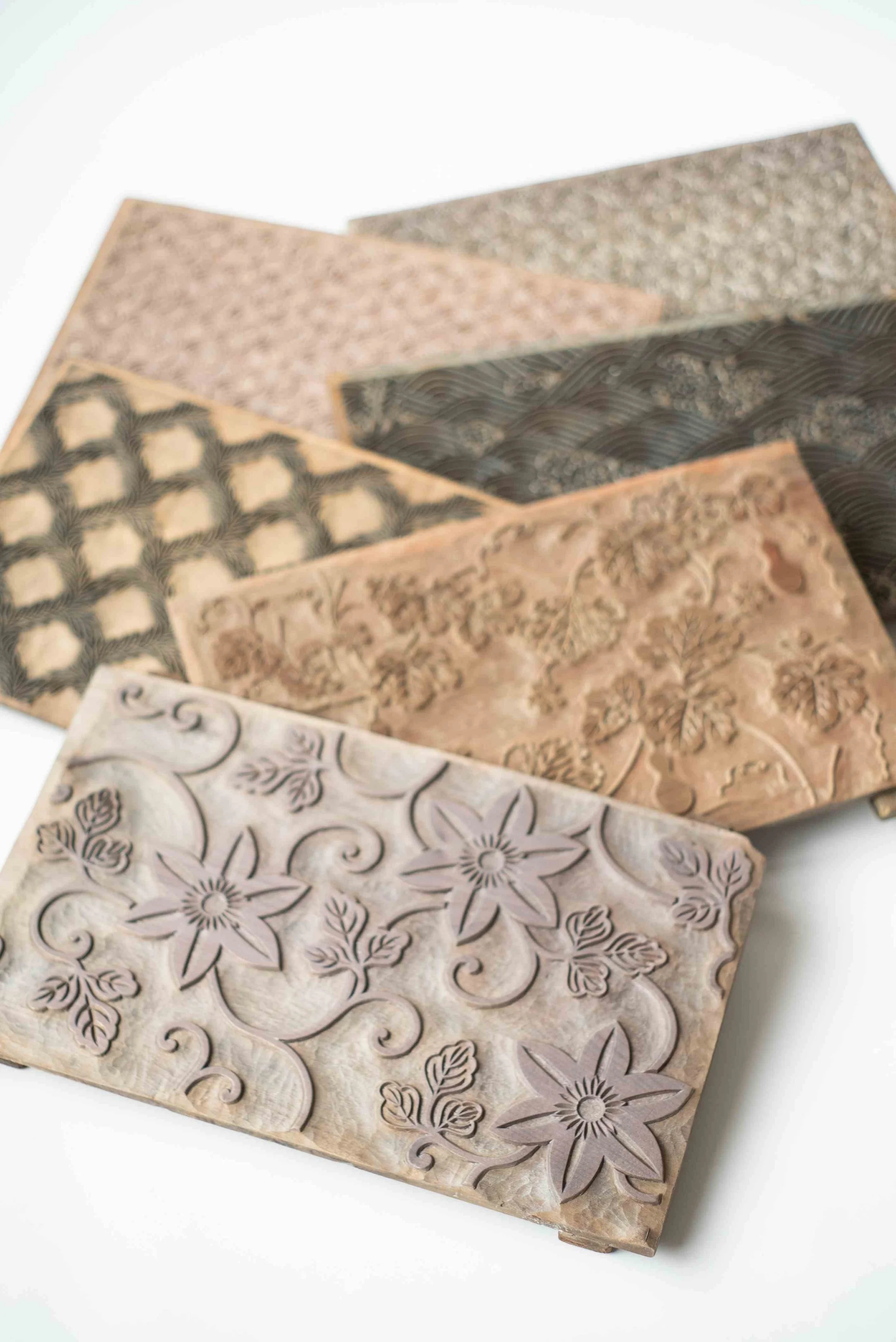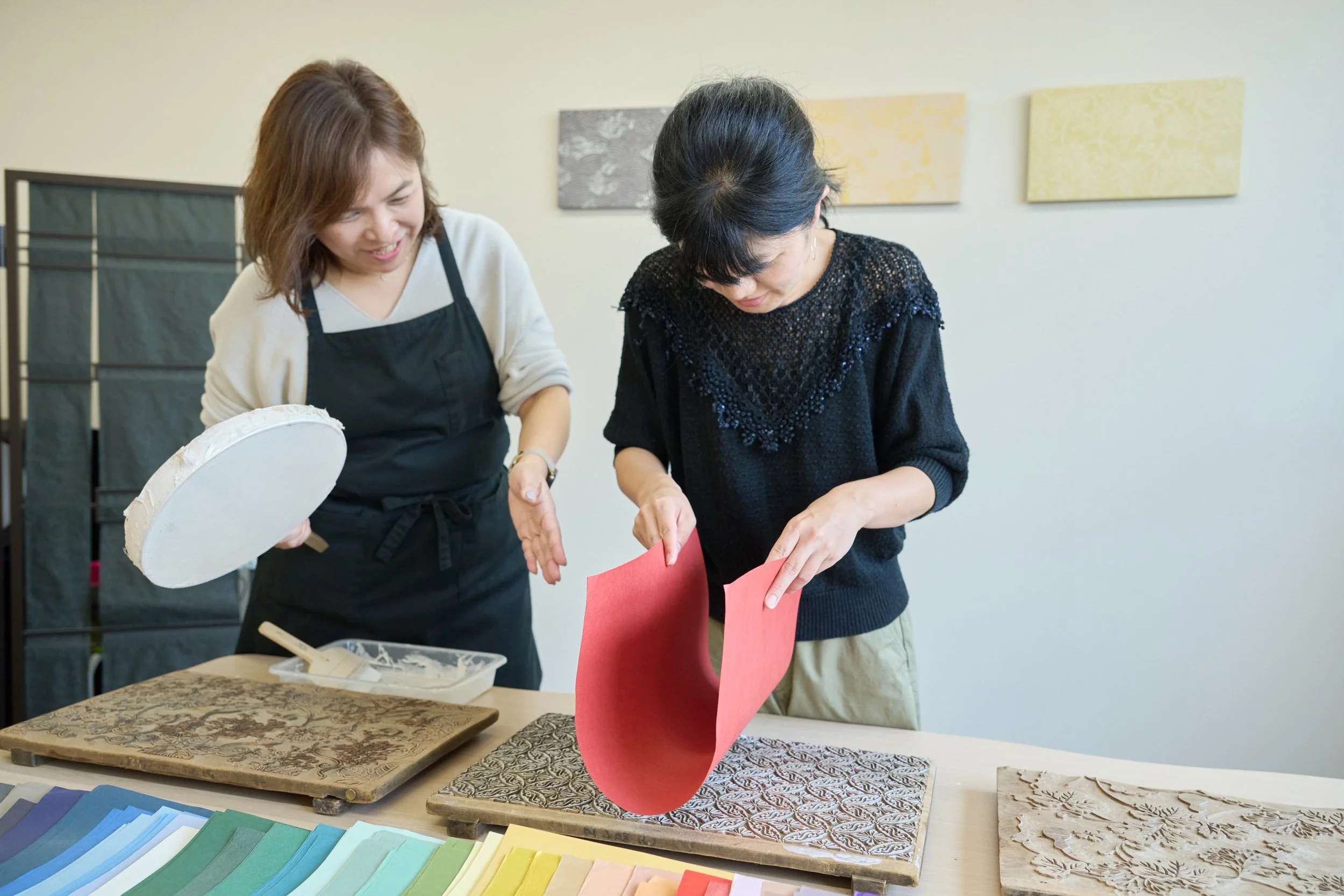Timeless Touches: The Art of Karakami
A journey through 1,000 years of handcrafted beauty
Each piece of Karakami paper is carefully hand-printed using traditional tools and techniques
In a quiet corner of Kyoto, artisans continue a practice that has transcended centuries: the making of Karakami, a traditional form of decorative paper that has adorned sliding doors, folding screens, and interior walls in Japanese architecture for over 1,000 years. Unlike ordinary washi paper, Karakami is characterized by intricate, often hand-printed designs using woodblocks and faintly shiny pigments, each pattern rich in symbolism and cultural meaning.
Karakami traces its origins to the Nara and Heian periods, when cultural and artistic influences arrived in Japan via China and Korea. These foreign elements were gradually transformed through local craftsmanship into something uniquely Japanese. The Kyoto region, home to the imperial court and temples, became a center of refined arts, and Karakami was developed both as a functional and decorative element that complemented the minimalist aesthetic of Japanese interiors.
Creating Karakami is an art form rooted in discipline and reverence. Artisans first produce washi paper, often made from mulberry bark. Then, using carved wooden printing blocks called hangi (some of which are hundreds of years old), they apply mineral-based pigments such as mica, Gofun (shell powder). The printing process is meticulous and requires
immense skill to align layers and patterns by hand. The final result is a shimmering surface that subtly changes with the light, evoking the seasonal nuances of nature.
Hangi: Wooden plates hand-carved with characters or patterns. At Maruni, many woodblocks dating back a few centuries are still in use
Today, Karakami is cherished not only for its beauty but also for its rarity. Few studios still practice this labor-intensive craft, making each piece a precious artifact of living tradition. Beyond traditional uses in homes and temples, Karakami is now incorporated into modern design objects, stationery, and art installations, connecting ancient sensibilities with contemporary aesthetics.
Maruni - Preserving and Sharing Karakami Today
Among one of Kyoto’s most revered Karakami studios is Maruni, established in 1901. This studio in the heart of the city has preserved Karakami craftsmanship. Maruni holds an archive of over 300 wooden printing blocks and continues to produce hand-printed papers using traditional methods. Their patterns range from classical court motifs to subtle nature-inspired themes, each imbued with history and elegance.
To share this cultural heritage with the public and the next generation, Maruni has created Karamaru, a hands-on Karakami experience studio and shop. At Karamaru, visitors can learn about the history and techniques of Karakami while trying their hand at printing their own paper using authentic blocks and pigments. This interactive experience invites deeper appreciation for the precision and creativity involved in the craft, offering a unique souvenir infused with a personal touch and cultural depth.
The experience is suitable for all ages and backgrounds, making it an enriching stop for tourists interested in Japanese culture, design, or history. Maruni represents a beautiful bridge between past and present, preserving Kyoto’s rich paper traditions while inviting the world to engage with it firsthand. For those seeking to experience a quieter, more tactile side of Kyoto’s cultural heritage, the world of Karakami offers a moment of reflection, creativity, and connection to Japan’s enduring sense of beauty.
Karakami Experience at Karamaru: After a brief explanation, participants print 3 sheets of Karakami. The session includes a workshop tour and artisan demonstration. Held Tues., Fri. (except holidays), and some Sat.; Reservations required by noon the day before. ¥9,000 per person. Max 6 participants per session.





